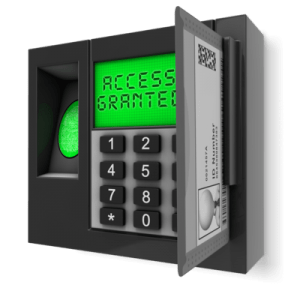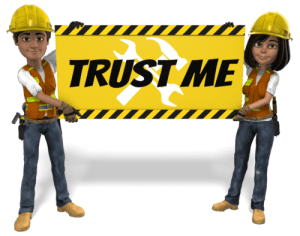 Last week Congress failed to extend the controversial Patriot Act, based in large part on attempts to stop the use of Meta Data by government security agencies. Another Senate vote was set for Sunday night, after being blocked by Senator Rand Paul
Last week Congress failed to extend the controversial Patriot Act, based in large part on attempts to stop the use of Meta Data by government security agencies. Another Senate vote was set for Sunday night, after being blocked by Senator Rand Paul
My fear is that Congress, and a lot of the American people, are becoming paranoid about technology and losing sight of the real issue. Advances in technology should not be feared; they need to be used for our benefit. How to contain the abuse of technology is where our focus should be.
I remember when I was growing up, we had a telephone table at the bottom of the stairs by the front door in my house. It had room for the black phone (no dial) and a phone book.
My first memories were of a phone on a party line. That meant we shared the same wires with someone else but the phone rang in our house at the same time as it did in the other party’s house. That’s why they called it a “party line.” If the incoming call was for us it had a different ring than the other party (like double-ring for us vs. triple-ring for them). I could pick up the phone (receiver) if it had a triple-ring and hear the other people talking. We literally shared the same line. Not real private, but it was good technology for the time.
To place a call, all you had to do was lift the received off the phone – and there was the operator. Give her (always female) the number you wanted and she could connect you via a switchboard and give the other person their special ring so they would pick up. Officially it was the Switchboard Operator, but it got shortened to just The Operator.
Later we switched to a private line and didn’t have other parties sharing the same line with us. Technology was progressing. Then we progressed to having a dial on the phone and only needed the operator for long distance. Next step, “direct dialing” with Area Codes; to tell the phone system (“Ma Bell”) it was long distance, we had to dial “1” first, then the area code.
Believe it or not, that was a half-century ago!
Today you just pick up your smart phone and dial a call from anywhere by pushing a single button and it goes through…usually. Ever wonder how it works?
If I’m in Orange with a Lake Charles cellphone, when I make a call my phone talks in digital to a tower and asks for an open line. The tower goes back to my Home Location (Lake Charles) and asks if it’s ok to let me use a line (i.e. will I pay for the call). If Lake Charles says OK, Orange adds me to the Local Area log so if I make more calls they know I’m OK to bill. Then they give me a line and the call goes through. This can happen in a split second, so I never even notice a delay.
When talking from Orange with someone in Houston on my Louisiana-based phone, I am using what is called a “traffic channel”. Before that, when my phone was talking with the tower to set up the phone, it was done over a “control channel.” At least at some levels, that’s a bit like talking with the operator and then getting connected on an open line.
The operator and her switchboard kept a record of the connection activity – so they could bill my family. Today the phone systems keep records of this connection activity too – so they can bill me for it. The concept is not a lot different, but the technology to do it has changed dramatically. This digital connection activity from the control channel is called “Meta Data”.
When you hear stories about the National Security Agency (NSA) and other government organizations storing information for use in analyzing terrorist phone activity, it’s the “Meta Data.” It’s just machine-to-machine communications to set up the call, not the stuff that’s carried on the “Traffic Channels”, no voice, nothing human, just connect data. It’s what the phone company uses for billing.
So what really is “Meta Data”? It’s information about other data. In a digital photograph, it identifies the camera settings and the camera that took the picture, it might even include a GPS location where the picture was taken. In the header of a webpage, the Meta Data includes the type of coding used, the title for the page, and perhaps some keywords.
In the 1950s the operator kept a log so Ma Bell could send a bill. Today the phone company stores records of Meta Data so they can send bill to the customer. What has changed is that it now all digital and can be manipulated and analyzed by software applications.
Digital means it’s stored on a computer. Digital means it can be sorted. Digital means it can be analyzed – by software applications called Data Mining.
Phone companies keep Meta Data to bill customers. They analyze it for marketing purposes. Perhaps it is used to improve service to their customers. Perhaps they also sell it commercially to others for marketing purposes. It’s a bunch of statistics.
Use statistics to improve service? By analyzing the Meta Data, you can get a better picture of when your phone lines are busiest, what departments are making the most outgoing calls and who’s getting the most incoming calls. What customers are calling you? Proper analysis can help improve revenue and expenses in a business. It’s good for business.
It is also absolutely essential for National Security in tracking information on terrorists and terrorism. People are concerned about the trade-offs of security versus privacy. What they fail to acknowledge is that we as a people have already abdicated our own rights to privacy by publishing information to the world on social media and e-mails. Is there anyone today who thinks that what they write in an email is really private information? How about what is published on Facebook, or Twitter, or other social media?
I do not believe that we need to constrain technology; we need to constrain those who use technology so that they do not abuse it. We do NOT need to take away valuable tools that our government uses and needs to combat terrorism and terrorists. We do need to make sure it is not abused.
We need to protect our country and our way of life. We need to keep the information private and let NSA and other anti-terrorist have the Meta Data and do their job – just give them boundaries on what they can do with it…and police them.
We cannot allow technology progress to reduce our security, we need to use it to increase our security – and prevent abuse. If you have strong feelings about this, write to our Congressman, Dr. Brian Babbin, at his office right here in Orange at 420 Green Avenue. Let him know what you think. That’s how our system of government works. Let our leaders know and make them accountable.
J David Derosier is a retired technology professional and worked for several years in a business that developed technology to prevent the use of cellular devices in restricted areas, without jamming. Prior to that he worked with Fortune-500 companies in Information Security (InfoSec) with a global focus on National Security. Today he consults with small business on planning and marketing issues, and provides web design and hosting services. He can be reached at JDAVID@Strategy-Planning.info.
[Want to see website Meta Data? With Internet Explorer, click on View>Source and look for the word “meta”. With Firefox click on Menu>Developer>Page Source.]

 A senior manager in a Fortune 50 company, to whom I reported for quite a few years, always insisted that his staff understand that, “If you can smell smoke anywhere, go and investigate, because it could be fire; and part of your job is to put out fires before they happen. “
A senior manager in a Fortune 50 company, to whom I reported for quite a few years, always insisted that his staff understand that, “If you can smell smoke anywhere, go and investigate, because it could be fire; and part of your job is to put out fires before they happen. “





 Does doing well on the football field make up for the failure of the schools to educate all the students?
Does doing well on the football field make up for the failure of the schools to educate all the students?








